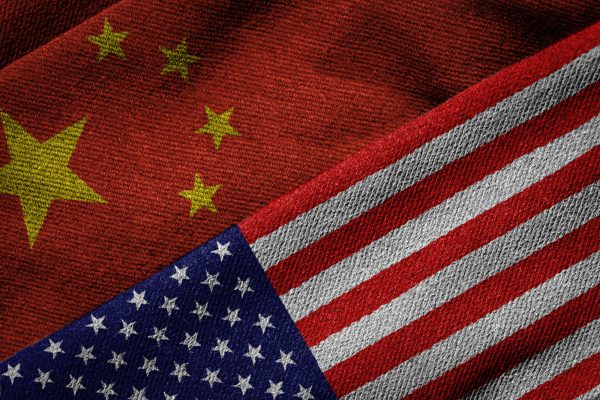
Both China and the United States have recently emphasized the need to invest in their respective diplomatic machines. If Beijing aims to grow its diplomatic influence to increase its global influence, Washington has recently announced the creation of the Office of China Coordination at the State Department, an initiative to make U.S. diplomacy more effective since – according to one anonymous official – the China-U.S. relationship “could not be managed alone through the bilateral desk approach.” Importantly, these developments follow from the first face-to-face meeting between U.S. President Joe Biden and Chinese President Xi Jinping in Bali, Indonesia, which took place in mid-November.
Although the simple fact that such a meeting took place might be considered good news (as I explain in this piece), potential sources for further tensions between the two countries are just around the corner. Among these, the risk of a China-U.S. conflict over the Taiwan Strait appears the most challenging issue, with former policymakers and experts debating what position the United States should take in case of an invasion. Clearly, a single meeting – even at the highest levels – is not enough to reconcile disagreements and begin a more cooperative relationship.
Yet, it is useful to note that efforts to restart direct and bilateral diplomatic engagement between Washington and Beijing following periods of heightened competition – if not outright rivalry and conflict on an international scale – are not new or unique features in the history of Sino-American relations. The development and unfolding of the ambassadorial talks between the mid-1950s and the early 1960s, when the People’s Republic of China and the United States did not entertain any official diplomatic relations, offers such an example.
Coincidentally, a triggering factor of the talks was the outbreak of the first Taiwan Strait crisis in 1954. As explained by Chinese historians Zhang Baijia and Jia Qingguo, the central purpose of the Sino-American talks was to reduce and eliminate tensions after the crisis ended. However, while Chinese leaders expected these talks to be conducive to further negotiations and a general improvement of relations between the two countries, the primary purpose for the United States was to rule out the PRC’s using force against Taiwan, as well as to demonstrate the U.S. commitment to its anti-communist allies in the region.
Despite the relatively good wishes accompanying the beginning of the ambassadorial talks, pretty soon a deadlock ensued. On the one hand, Beijing refused to provide any guarantee on what they would be doing in relation to Taiwan, which PRC policymakers saw as an internal problem; on the other hand, Washington firmly asserted its right to unilateral or collective defense in the Taiwan area, denying any further meetings until China had abandoned its intention to intervene militarily.
Even when the second Taiwan Strait crisis broke out in 1958, when the People’s Liberation Army shelled the islands of Kinmen, the ambassadorial talks kept playing an important role in maintaining Sino-American communications ongoing during a crisis. In particular, their resumption in Warsaw in 1958 provided “a port in an ever-growing storm” and helped control further escalations and prevent direct military confrontation of the two countries over Taiwan. Although this time around Beijing and Washington pursued different objectives – the former interested in restoring communications to understand U.S. intentions about its support for Taiwan, and the latter aiming to reduce instability in the Taiwan Strait – the talks were a useful instrument to defuse mutual fears and keep both sides updated on each other’s moves.
Once the most acute part of this second crisis ended, Sino-American relations hibernated again until 1962. Then, the talks system prevented another major incident involving Taiwan by facilitating informal conversations, information exchanges, and discussions of security concerns between their respective ambassadors. As Wang Bingnan, a CCP diplomat involved in the talks, acknowledged in 1964, thanks to this channel “whenever a major international event occurred, both China and the United States could state their positions and express their views, enabling each to appreciate the other’s attitude and actions.” Although the two sides had virtually no other opportunities to meet, “they understood each other quite well.”
Certainly, the current situation is much different, and the ambassadorial talks did not produce any substantial change in both countries’ foreign policy fundamentals. However, this historical precedent is still important as it shows that even during major crises the PRC and the United States have strived to maintain contacts, succeeding in the effort. Moreover, between the 1950s and 1960s the talks provided the United States with better knowledge about the PRC’s negotiating style and its positions on several issues.
As Steven Goldstein put it:
[The] most important unintended consequence was their role in stimulating Washington to rethink, and in some cases to test, its policies in negotiations with the PRC. The need to provide information and instructions to the delegation in Geneva/Warsaw compelled the State Department to devote considerable time to trying to understand the foreign policy of the PRC. As the record from 1955 to 1968 amply demonstrates, preparations for the talks were occasions for fresh thinking about ways to engage Beijing.
Clearly, today’s stakes are incredibly complex for both countries. Therefore, the creation of a special unit replacing the China Desk in the State Department’s East Asian and Pacific Affairs bureau is certainly good news. However, as the history of Sino-American relations demonstrates, maintaining a bilateral channel is equally important.
In this perspective, the ambassadorial talks – employed as a tool to signal intentions, and as a safe venue to exchange sensitive information between Beijing and Washington – with their unintended contribution to inform policy might offer a blueprint for Beijing and Washington to evade confrontation on persistent and intractable issues, including over Taiwan, on the bumpy road to improve relations.
Back to Diplomacy? The Bumpy Road to Sino-American Détente
Source: Frappler

0 Comments